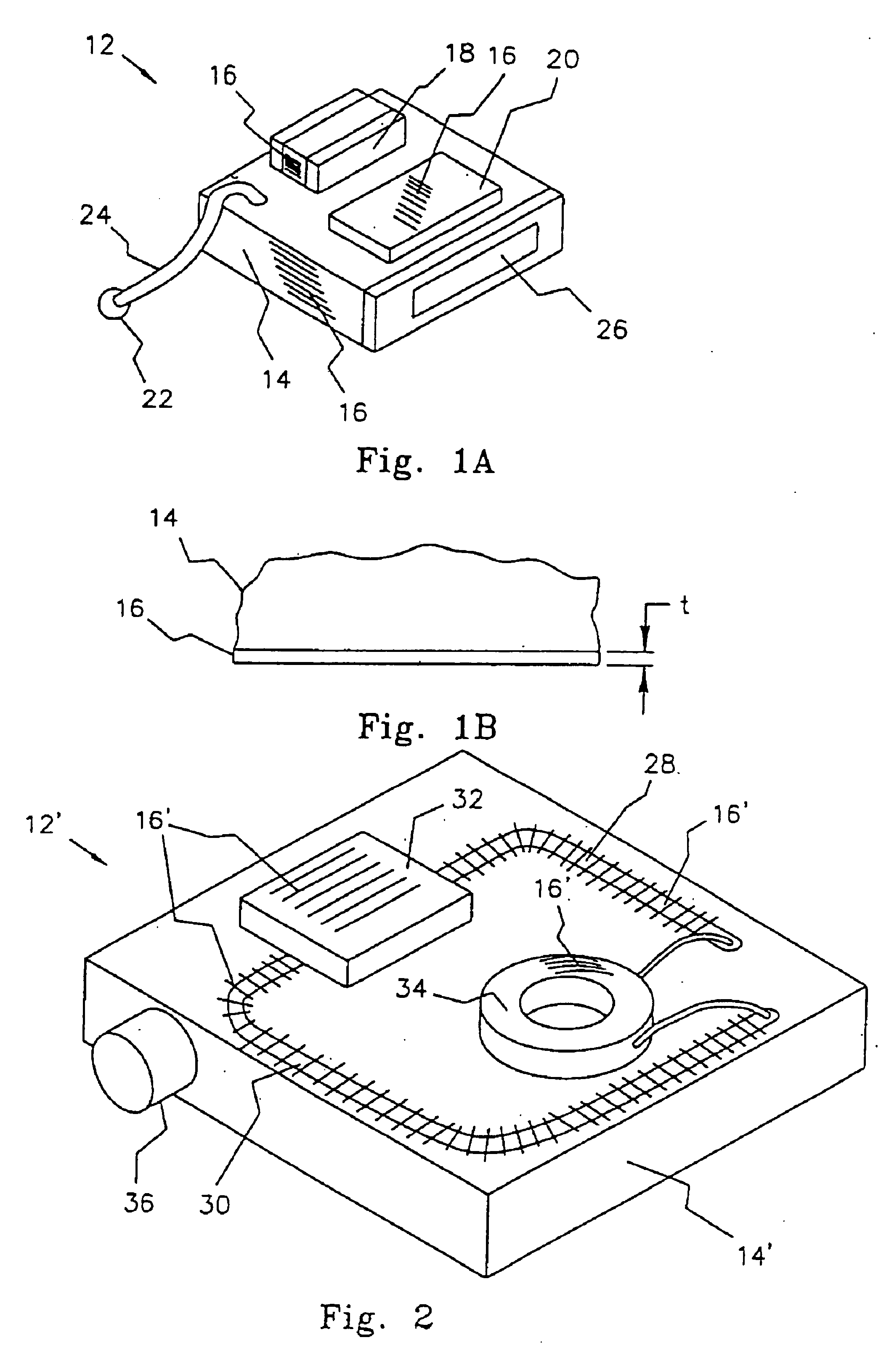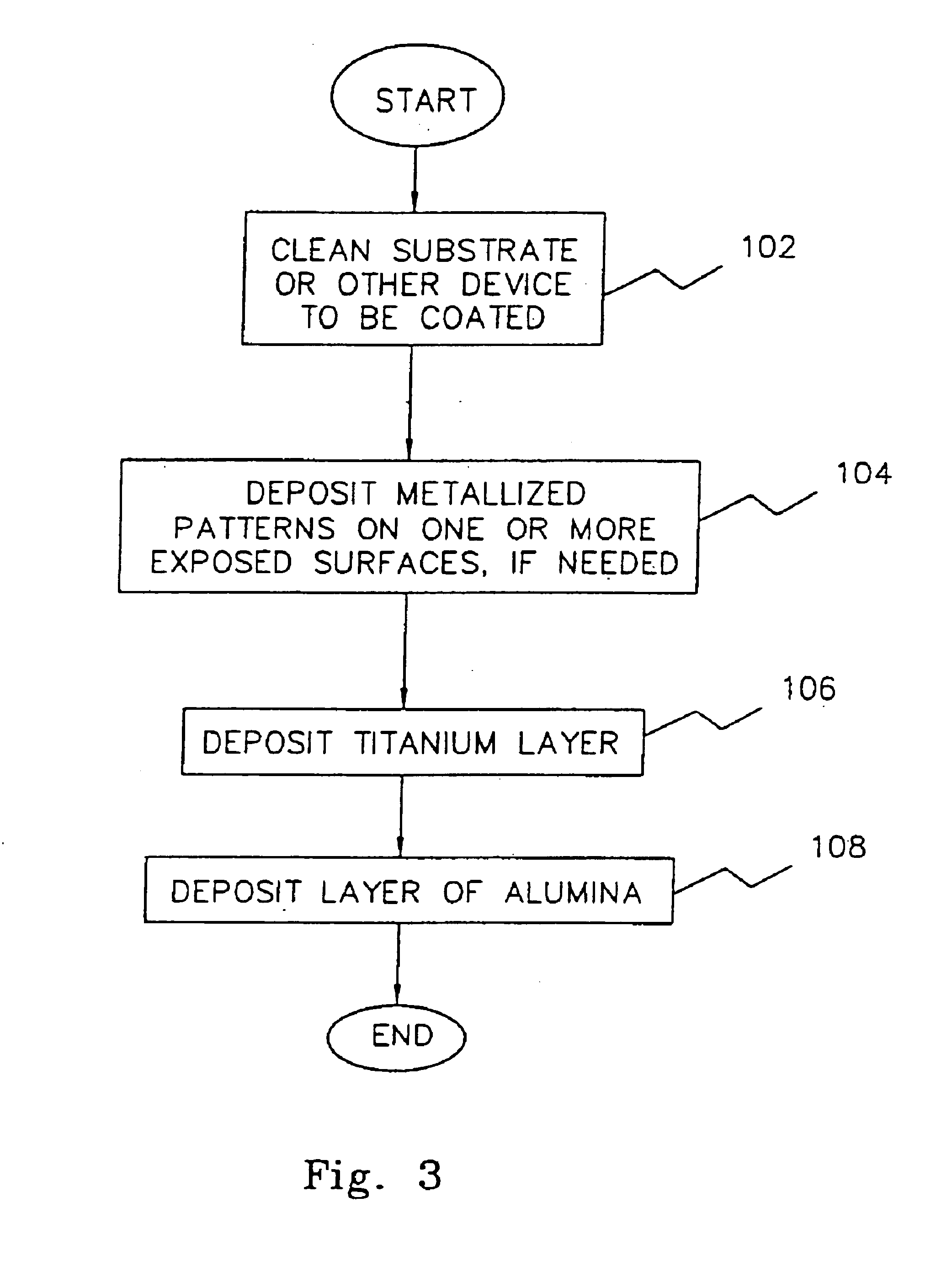Alumina insulation for coating implantable components and other microminiature devices
a micro-miniature device and alumina insulation technology, applied in the direction of gas-filled discharge tubes, diaphragms, packaged goods, etc., can solve the problems of high leakage rate of alumina insulators, high cost, and high cost, and achieve excellent insulative properties, safe implanting in living tissue for long periods of time, and easy application
- Summary
- Abstract
- Description
- Claims
- Application Information
AI Technical Summary
Benefits of technology
Problems solved by technology
Method used
Image
Examples
example
A test specimen that included a plurality of 75 mil by 25 mil and 75 mil by 5 mil metallized pads deposited on an alumina substrate was constructed using conventional techniques. The plurality of metallized pads are separated from one another by a distance of about 2.0-2.5 mils. A layer of alumina insulator approximately 5-6 microns thick was deposited on and between the metallized pads using an ion-enhanced evaporative sputtering technique. The ion-enhanced evaporative sputtering was performed in an evacuated chamber at a moderate temperature of about 60-100° C., and allowed to cure for approximately 0.5-4 hours. The test specimen was subsequently submersed in a saline solution at 87° C. for three months. Leakage current between the metallized pads and the saline solution was measured and did not exceed 10 pA across the 6 micron size insulating layer. In addition leakage current between each metallized pads did not exceed 10 pA across the 2.0-2.5 mil spacings.
PUM
| Property | Measurement | Unit |
|---|---|---|
| Temperature | aaaaa | aaaaa |
| Time | aaaaa | aaaaa |
| Thickness | aaaaa | aaaaa |
Abstract
Description
Claims
Application Information
 Login to View More
Login to View More - R&D
- Intellectual Property
- Life Sciences
- Materials
- Tech Scout
- Unparalleled Data Quality
- Higher Quality Content
- 60% Fewer Hallucinations
Browse by: Latest US Patents, China's latest patents, Technical Efficacy Thesaurus, Application Domain, Technology Topic, Popular Technical Reports.
© 2025 PatSnap. All rights reserved.Legal|Privacy policy|Modern Slavery Act Transparency Statement|Sitemap|About US| Contact US: help@patsnap.com



